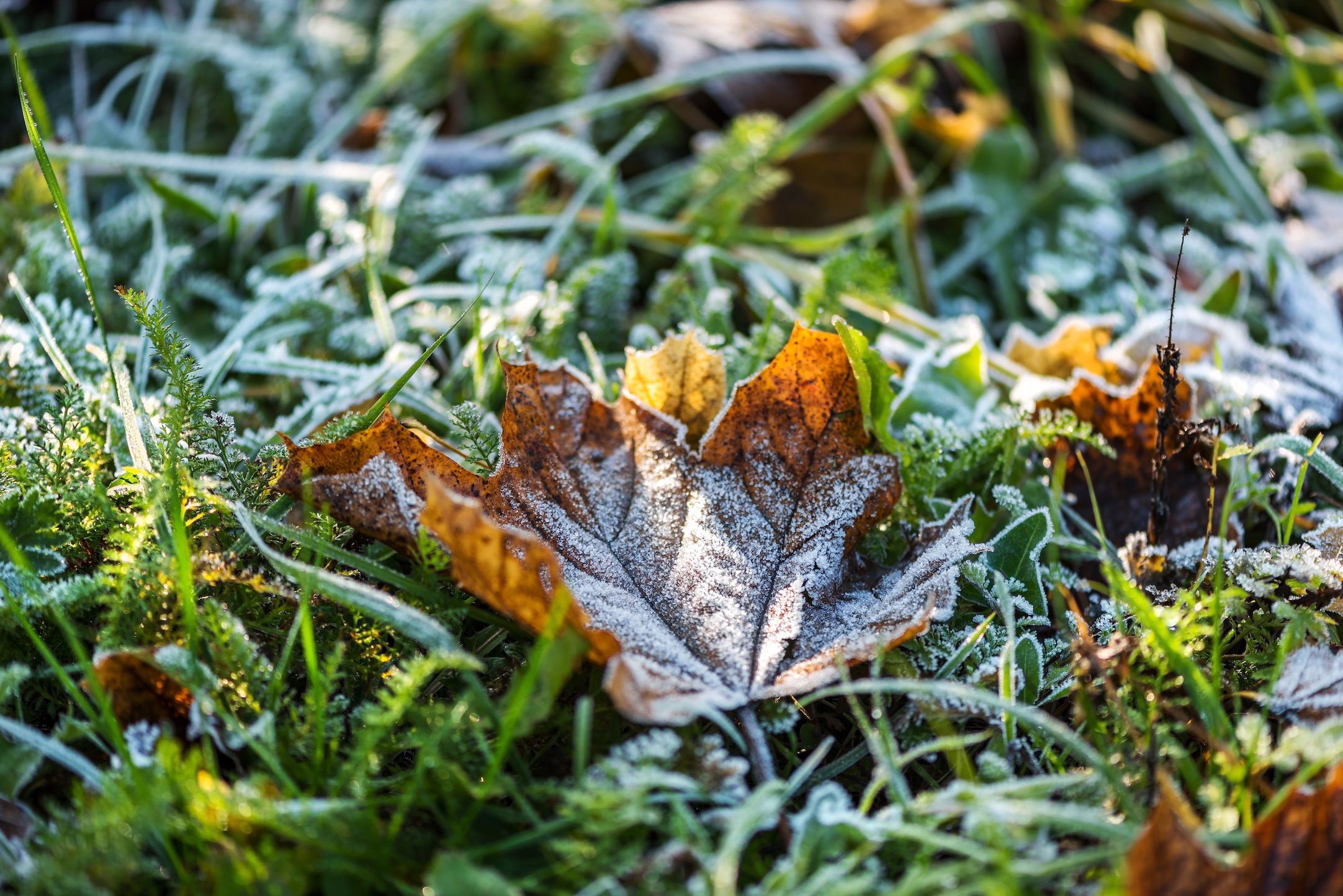Winter Lawn Prep: Aeration, Overseeding, and Fertilizing
Learn how to prepare your Midwest lawn for winter. Get timing tips, grass seed guides, and a fall lawn care checklist for a greener spring.

In the Midwest, winter lawn prep sets the stage for how your lawn looks the following spring. Focusing on aeration, overseeding, and fertilizing before winter gives grass the best chance to remain healthy through the cold months. With some preparation now, you can look forward to a thicker, greener lawn once the snow melts.
Why Fall Sets the Stage for a Healthy Midwest Lawn
Cool-season grasses, like those found across the Midwest, respond best to the mild temperatures and steady moisture of fall. This is when roots grow deep, store energy, and build strength for the upcoming months. A strong root system also aids grass in resisting disease and recovering faster in spring. According to the turf specialists at the University of Wisconsin, focusing on lawn care during this window lays the groundwork for healthy, dense turf once the growing season returns.
Related Article: How to Grow a Picture-Perfect Lawn: Your Midwest Lawn Care Guide This guide walks you through mowing, watering, seeding, and fertilizing schedules tailored for Midwest conditions. It's a helpful companion to your fall prep routine and supports a healthy lawn all season long.
Understanding Cool-Season Grasses & Climate Zones
Midwest lawns are typically made up of cool-season grasses such as Kentucky bluegrass and perennial ryegrass. Each type has its own strengths, from quick germination to drought tolerance. Your USDA growing zone plays a significant role in when to tackle lawn care tasks. For example, Zone 3 has a shorter fall window than Zone 6. Local microclimates, such as shaded areas or sandy soils, also impact timing. Understanding these factors makes it easier to plan aeration, overseeding, and fertilizing at the ideal time for your yard.
Core Aeration: Benefits, Timing, and Best Practices

Core aeration is one of the best ways to refresh tired turf before winter. Pulling small plugs of soil from the lawn opens up space for air, water, and nutrients to reach the roots. This process also breaks up thatch and creates an ideal seedbed for overseeding. Most lawns benefit from aeration every one to five years, depending on soil compaction and thatch buildup. The right timing and a few simple techniques ensure the results will be even better.
Why Core Aeration Matters
The main core aeration benefits come from giving grass roots more room to grow. Pulling plugs from the soil reduces compaction and improves oxygen flow. It also lets water soak in more easily and breaks up thatch, which blocks nutrients from reaching the roots. With these barriers eliminated, roots grow deeper and turf thickens over time. Healthy roots mean grass is better prepared for winter and bounces back quickly come spring.
Timing and Frequency by Zone
For most midwestern lawns, the best time for aeration is in early fall, when soil temperatures are still warm but the air is cooler. In USDA Zones 3-5, aim for late August through September. Soil temperatures and frost timing are practical guides. You’ll want to wait until the summer heat has passed, but before the ground hardens. Most lawns benefit from aeration every 1-5 years, but heavily compacted or thatchy areas may need it twice a year for a season or two.
Pro Tips for Better Results
For the best results, mow the lawn short and water lightly one or two days before aerating. Make a second pass at a different angle so you can create more holes per square foot. Aim for 20-40 holes in each square foot to reduce compaction and improve nutrient flow. Leave the soil plugs on the lawn, as they’ll break down naturally and feed the grass.
Overseeding: Thicken Turf and Improve Resilience
Overseeding fills in the thin spots, adds new grass varieties for better durability, and keeps a lawn looking full. Pairing overseeding with aeration lets new seeds settle into the soil, where they can take root before winter sets in. The right timing and care play a significant role in how well the new grass grows.
Best Time to Overseed in the Midwest

Cool-season grasses germinate best when soil temperatures are between 55°F and 70°F. In much of Zone 5, the ideal seeding window runs from about August 25th through September 30th. Zone 3 areas, like northern Minnesota, might need to start as early as mid-August. Warmer zones, however, can seed into early October. Late seeding means young grass doesn’t have enough time to establish before frost. Usually, mid-August through mid-September offers the best conditions for quick germination and strong root growth.
Can I aerate and overseed after early October in Minnesota? It’s possible, but risky. By early October, soil temps in Minnesota often drop below ideal germination levels for cool-season grasses. You might not see much growth before winter. If you’ve missed the main window, consider dormant seeding later in fall — spreading seed that will lie dormant through winter and sprout in early spring when conditions improve.
Selecting the Right Seed
Choose grass seed based on how you use your lawn and the conditions it faces. Kentucky bluegrass offers dense, fine-textured turf, tall fescue handles droughts well, and perennial ryegrass sprouts quickly to fill gaps. Many blends mix these varieties to balance looks and maintenance needs. Always go for certified seed and follow the recommended seeding rate for your grass type per 1,000 square feet.
<div class="rt-cta"><a class="cta-link-button inline-link" href="https://www.fleetfarm.com/category/lawn-garden/lawn-care/grass-seed/_/N-2905910143">Shop all types of grass seed at your local Fleet Farm</a></div>
Step-by-Step Guide to Overseeding
Here’s a quick guide to overseeding:
- Mow the lawn shorter than usual and bag the clippings.
- Aerate or verticut to open the soil surface.
- Spread seed evenly in two directions for even coverage.
- Lightly topdress with compost or soil, then apply starter fertilizer.
- Water gently but often to keep the soil moist until seedlings are established.
- Wait until the new grass is about 3 inches tall before mowing.
Following these steps gives new grass the best chance to grow strong before winter.
Fall Lawn Fertilization: Fueling Roots Before Winter
Fall is the perfect time to feed your lawn so it can store energy for the months ahead. The cooler weather and active root growth mean nutrients go straight into building strength, not pushing top growth. With the right blend and timing, your lawn enters winter prepared to thrive again in spring.
<div class="rt-cta"><a class="cta-link-button inline-link" href="https://www.fleetfarm.com/category/lawn-garden/lawn-care/lawn-fertilizers/_/N-2799937765">Find lawn fertilizer and grass seed at Fleet Farm online or in store</a></div>
Understanding Fall Nutrient Needs
Nitrogen is the primary nutrient your lawn needs in the fall. It fuels root growth and energy storage for winter. Potassium is also key because it supports winter hardiness and disease resistance. Before you fertilize, a soil test will show if your lawn needs any nutrient adjustments. Late-season fertilization keeps grass greener longer into winter. It encourages faster spring green-up without pushing too much blade growth.
Fertilizer Blends to Look For
Many fall and “winterizer” fertilizers are labeled with numbers like 24-0-12 or 46-0-0, showing the percentages of nitrogen, phosphorus, and potassium. Slow-release options feed the lawn over time, while fast-release blends work more rapidly. For a lower-input approach, organic fertilizers add nutrients along with organic matter to improve soil health. Your choice depends on your lawn’s needs and how quickly you want to see results.
When and How to Apply
In most of the Midwest, you should apply fertilizer from late October through early November. Wait until soil temperatures are above 40°F and there’s no snow cover. Apply evenly across the lawn using a spreader or sprayer, and sweep any stray granules off sidewalks or driveways to avoid runoff. It’s recommended to apply 50-60% of your lawn’s yearly nitrogen between late summer and mid-fall, with the final application coming right before winter dormancy.
Do I need a winterizer if I used a slow-release 22-0-10 in mid-September? Maybe not. If your mid-September fertilizer had enough nitrogen and included slow-release nutrients, your lawn may already be well-fed going into winter. Still, a late-season boost with a winterizer can help if your lawn sees heavy use or you want faster green-up in spring. A soil test can confirm if a second application is needed.
Building a Fall Lawn Care Checklist

A clear plan makes fall lawn maintenance easier and keeps you on track before winter weather sets in. Begin with a soil test to see what your lawn needs. Then, follow this sequence: aerate, overseed, fertilize, and water regularly. Keep mowing at the right height, even after seeding, and adjust watering as temperatures cool. Using the best garden and landscaping tools and having a checklist ensures each step gets done in the correct order for the best results.
Related Article: Late Summer Maintenance Tips for Your Garden Learn how to transition your garden from peak season to fall with smart pruning, feeding, and cleanup tips. These late-summer tasks help plants stay healthy and strong as the weather cools.
Winter Lawn Protection Tips (Beyond the Basics)
Once the lawn is prepped for winter, a few extra steps will keep it healthy until spring. Simple changes to mowing, leaf cleanup, and snow management have a sizable impact on how your grass looks when the snow melts.
Related Article: How to Prepare Your Lawn for Winter Get ahead of the cold with practical tips for your final mow, fall fertilizing, and protecting grass from snow damage. Prepping now leads to a stronger, greener lawn in spring.
Leaf and Mowing Management
Set your mower to 2-2.5 inches for the final mow of the season. This height prevents snow mold while keeping enough leaf surface for photosynthesis. Keep leaves from piling up. You’ll want to mulch them with a lawn mower or rake them weekly so they don’t mat down and smother the grass.
My lawn is mostly tall fescue. Should I mow lower before winter? Yes, but not too low. For tall fescue, lower your mower height slightly for the final cut — around 2 to 2.5 inches is ideal. This helps reduce snow mold risk without stressing the grass. Avoid scalping, as fescue needs some leaf surface to stay healthy through winter.
Preventing Salt & Snow Mold Damage
Ice-melt products containing sodium damage grass along sidewalks and driveways. Use alternatives like calcium magnesium acetate near turf to avoid injury. If snow mold has been a problem previously, treat trouble spots with fungicide before snow falls. In spring, rake matted areas to encourage new growth.
Common Fall Lawn Prep Mistakes to Avoid
Some fall lawn missteps can undo all your hard work. Seeding too late means the grass won’t have time to take root before frost. Skipping aeration leaves soil compacted, making it harder for roots to receive air and nutrients. Applying too much nitrogen in the fall pushes blade growth instead of root development. Overwatering is another trap, as cooler weather means the soil stays moist longer. Watching the calendar, following recommended rates, and adjusting watering keeps your lawn in excellent condition going into winter.
A Lawn That Leads in Spring
A little time spent on fall lawn care pays off when warm weather returns.
Key Takeaways:
- Fall is the best season for core aeration, overseeding, and fertilizing cool-season lawns.
- Timing matters. Match your tasks to your USD zone and local conditions.
- Healthy roots now mean thicker, greener grass in spring.
Action Items:
- Test soil before adding fertilizer.
- Aerate and overseed during your zone's recommended window.
- Apply a fall or winterizer fertilizer before the ground freezes.
- Keep mowing and clearing leaves until the lawn goes dormant.
<div class="rt-cta"><a class="cta-link-button inline-link" href="https://www.fleetfarm.com/?srsltid=AfmBOooS88jpD3riRRwDdM7HxdW14MymnhcVxszBukUSzeRrhqWV1VbJ">Visit Fleet Farm for the grass seed, fertilizer, and tools you’ll need to get the job done</a></div>












